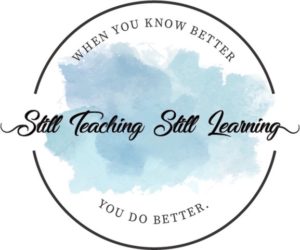
I’ll never forget receiving my student teaching placement: fifth grade. Ugh. I had completed several hours of classroom work at lower grade levels and did not feel at all prepared to teach students who were nearly as tall as I was. I was worried that I wouldn’t know how to deal with behaviors or bad attitudes. What if they just ignored everything I said? And the content they learn is not easy!
Thankfully – most of my fears went away as I worked with my cooperating teacher and my awesome class of fifth graders. I had a wonderful experience (with a few bumps in the road, of course), and that cemented my love for upper elementary students. I have been teaching or instructional coaching in upper elementary grades for more than 30 years now!



If you’re new to upper elementary grades, or just want to know what to expect, here are eight observations that are helpful to know.
1 – They want to know the rules and expectations & they expect the teacher to be “the boss”.
2 – They thrive on routine with occasional changes to liven things up. They want you to be predictable, but engaging and fun.
3 – They want to be part of a supportive community. They don’t want to be embarrassed in front of their peers or to feel “stupid”. They worry about bullies.
4 – They want to be more independent & to be asked for their input. They still want to please their teachers (even though some may not show it).



5 – They love to help and to feel useful.
6 – They want to know their teacher likes them & respects them
7 – They want to learn more about the world and about topics they care about. They question things and want to know the “why.” They are starting to understand different viewpoints besides their own, which makes for some thoughtful classroom discussions.
They still get excited about learning! That being said, they will be at very different achievement levels (similar to lower grades), but they are better at hiding their lack of understanding. The curriculum is more difficult, but they are capable of rising to the challenge. Most of them love to work together and find that to be very engaging.
8 – They still want their grownups/families to be proud of them.
This is the first post in a series where I will discuss each of these eight topics in more depth, along with some tips for how to address upper elementary students’ needs.



First observation: they want to know the rules and expectations and they expect the teacher to be “the boss.” They want to feel safe.
Here are some ways to support them.
1 – Set your classroom expectations early (on the first day of school) and enforce them consistently. (This is not just about going over “the rules.” This is a more global expectation of how you want your students to think and act.)
How to do this?
~Create a list of no more than three values you want or expect to see in your classroom. Examples might be kindness, respect for everyone, and consideration. Tell them that this is what you expect, all day, every day.
~When a student violates one of those expectations (for example by speaking disrespectfully or saying something unkind), stop them right away. Tell them that what they did/said was not kind or respectful. Ask them to think about how they can “fix it” (by apologizing or rephrasing what they said or using a different tone, for instance), and then ask them to do the fixing. Remind them that you expect kindness or respect at all times.
This does not need to be done in a loud or threatening or mean way. You can say that very calmly, modeling how you want them to speak to others. Although I recommend that most disciplinary actions need to be kept private, stating your expectation to the student and the entire class sets the tone.



~When YOU violate one of those expectations (it happens!), stop right away. Tell the class what you did/said that was not respectful or kind, then apologize. Tell them you will do better going forward. This is so powerful for modeling the expectation, but also showing that we all mess up sometimes. The goal is to recognize the mistake, take ownership and apologize, fix it, then move forward.
~Don’t be afraid of being a little “strict” as the school year begins. You can always loosen up later, but you can’t usually tighten up later. Try very hard to say what you mean and show them that you mean what you say.
~Be firm, but fair. They expect you to be the “boss,” but they respect you more when they see that rules and expectations are fair to everyone.



~As much as possible – incorporate a sense of humor into your directions and your teaching. Find the joy and humor in classroom experiences together. Humor goes a long way in helping release stress (for you and for students) and helps students feel more connected to you and to each other.
~They still love stickers and small rewards! Consider using these as occasional rewards or appreciation for upholding the class values or working especially hard on something.
~Consider using tips from the Responsive Classroom. One of my favorite teacher books of all time is Teaching Children to Care by Ruth Sidney Charney, one of the founders of the Responsive Classroom framework. I reread chapter two in that book every single year at back to school time.



2 – Spend time thinking about your classroom procedures before the school year begins.
How to do this?
~Use the list below to think about how you want students to do things in your classroom. You will start teaching these procedures on the first day of school (and will continue reinforcing throughout the first six weeks. Yes, I did say six weeks! It often takes that long to get everyone “trained.”).
~Be consistent in expecting the procedure to be followed correctly. Have them practice as often as they need to get it right.



~If a particular procedure isn’t working for you for whatever reason, it’s okay to change it! Acknowledge to your students that it is not working, ask for their suggestions for making it better (or share what you are thinking might work better), and try it out. Again – you are modeling learning from mistakes and making continuous improvements and those are powerful lessons to teach.
3 – At the beginning of the year (and throughout the year), spend more time organizing your classroom and worry less about decorating.
How to do this?
~Keeping your classroom uncluttered and marking off clear areas for your class (meeting area, small group instruction area, math manipulatives, classroom library, where to turn in finished work, etc.) is far more important than whether or not your classroom is completely decorated. You can always add decor items throughout the year as needed.
~It’s fine to keep walls and bulletin boards bare at the beginning of the year! You can always create charts with your class and post those as you make them. They have more meaning for students than teacher-created or purchased posters.



4 – They will be very talkative, and you need to have a plan for that.
How to do this?
~Think about ways to channel their need to talk into productive discussions. Use turn & talk with a partner or small group, use these five Kagan strategies, have students explain or repeat something to partners, let them share what they’ve learned with partners or small groups.
~Here are more tips for channeling the talking!



~Be very clear about when students should talk and when they need to stop talking and allow for quiet work time or think time.
~Think about good attention-getting signals such as a wireless doorbell, using music, using a timer, call-backs like these, or clap-back rhythms.



5 – They will question and push boundaries, and you need to have a plan for that.
How to do this?
~Understand that questioning why certain rules or procedures have to be followed (not talking in the halls, for example) or even questioning adults’ authority is part of their development at this age. Most of the time, they genuinely want to know and it’s not meant to be personal or challenging.
~That being said, they are still children and they need to learn the difference between questioning in appropriate ways and being argumentative or disrespectful. Asking them to re-state their question or comment in a more positive, respectful way often helps. Then give them a respectful answer.



~Do not be afraid of them but avoid power struggles. A quiet, private conversation when both of you are calm is a much more effective strategy for teaching appropriate behavior and respectful interactions.
Some of my posts about specific behavior issues and how to respond:
How to Deal with Difficult Students
When the Back-to-School Honeymoon is Over
How to Get Your Students to Follow Your Directions the First Time
How to Motivate Your Students to Work Harder Than You’re Working
How to Motivate Students When They’re Tired of the Routine
Irritating Student Behaviors & How to Respond
For my upper elementary veteran readers, what would you add to this list?
I hope this helps you think about how you can support your students’ need for a safe and predictable learning environment! Remember to subscribe so you don’t miss my next posts about teaching upper elementary students!
